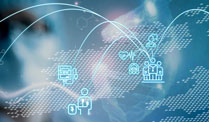Heart Valve Surgery
Contact Us
Please note a referral letter is required before an appointment can be confirmed.
Useful Information
About this service
Heart valve surgery is a procedure used to treat heart valve disease.
For patients with heart valve disease, at least one of the four heart valves that keep blood flowing in the correct direction through your heart does not function properly. Your surgeon has the choice of either repairing or replacing the affected heart valves.
The different types of valve disease that can develop in the heart are:
- Aortic valve disease
- Mitral valve disease
- Pulmonary valve disease
- Tricuspid valve disease
This procedure will normally take between four to six hours to complete.
Heart valve surgery is usually carried out under general anaesthetic which means you will be asleep and feel no pain during the procedure.
In some cases, you may need to wear compression stockings to keep your blood flowing. You may also need to have an injection of a medicine called heparin to help prevent blood clots forming in the veins in your legs.
The surgery can be carried out in a more traditional way, or using minimally invasive techniques which have been more recently introduced for this type of surgery.
If valve disease is affecting a number of the heart valves, traditional heart surgery will be used.
In order to reach each of the disease areas and repair them effectively, your surgeon will reach the heart by opening the chest area.
While the Surgeon is operating on your heart, you will be attached to a bypass machine which will keep the heart pumping and ensure that blood continues to be pushed throughout the body.
If your valve is not seriously damaged, it may be possible to repair it. For example, a narrowed valve can be widened or an artificial support may be added to strengthen the valve.
If your valve is seriously damaged, it may have to be replaced.
If valve disease is isolated to one particular valve, it may be possible for a surgeon to use a minimally invasive technique. This means that surgery can be performed via a smaller insertion instead of opening the chest.
The minimally invasive technique involves the surgeon making several small cuts in your skin and passing instruments and a camera through these. They will use the camera to guide them through the operation.
This type of surgery reduces blood loss, trauma, and the length of time spent in hospital.
You will stay in the intensive care unit for one to two days for close monitoring.
Monitoring during recovery includes continuous heart, blood pressure and oxygen checks, along with frequent checks of vital signs and other parameters, such as heart sounds.
You should be able to leave hospital after approximately 10 days.
A full recovery can take two to three months.
After approximately six weeks you should be able to resume driving, depending on the advice of your Consultant and insurance company.
You can resume heavy lifting and other more strenuous activities within five to eight weeks following surgery.
You will be prescribed a medicine called an anticoagulant (usually Warfarin) in order to prevent blood clots forming around the new valve.











